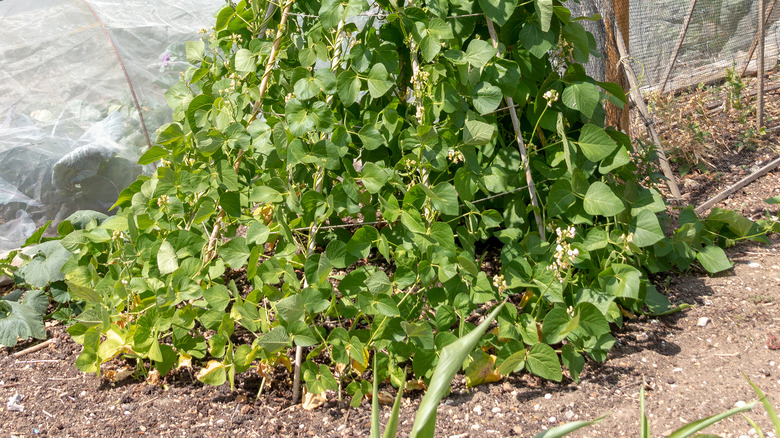Bavi: The Southwestern Superfood You Should Know About
"Superfood" is a popular term, but what exactly does it mean? According to UC Davis, there's no precise scientific definition, but the word generally refers to food packed full of healthy compounds that are thought to promote well-being and possibly help stave off illnesses. The banana was the first food honored with the title of "Superfood," starting in the 1900s, thanks to its affordability, nutritiousness, and versatility. By the time the 21st century rolled around, more and more natural ingredients were named superfoods. Now, everything from blueberries to ginger, matcha, oats, seaweed, and turmeric can be considered superfoods. Ancient grains like buckwheat and quinoa have earned the title, also, hinting at how long superfoods have unofficially been a part of human gastronomic history.
For example, take the Native American Tohono O'odham people and their diet, historically speaking. Per Encyclopedia Britannica, the Tohono O'odham are indigenous to the deserts of what is now the states of Arizona in the U.S. and Sonora in Mexico. This arid homeland made the cultivation of crops hard, so they moved around and relied on wildly grown sustenance. That doesn't mean they didn't practice farming techniques, though. When rains began, the Tohono O'odham would plant seeds in very particular ways to water them via flash floods. Later, they would gather what grew. Given the hardships people such as the Tohono O'odham once endured, it's not hard to see why superfoods (even if they weren't called that then) would serve a vital role in traditional, resourceful agriculture.
Tepary beans
Also called bavi (by Native American growers like Ramona Farms), tepary beans are a Southwest American superfood — one that more and more people are becoming interested in. The beans grew wildly in the Sonoran Desert for thousands of years and were gradually domesticated by people like the Tohono O'odham. They weren't alone in doing so, either. Dozens of indigenous cultures are known to have grown tepary beans (via NPR), and modern native peoples still grow them to this day, using summer rains and limited irrigation.
Why were tepary beans once so popular and why might they get famous again? Bavi are full of nutrients, per NPR, especially protein — more so than their close family members like kidney and pinto beans. Brown tepary specifically is good for diabetics, due to its slowly digestible carbs. Plus, AgriLife Today notes that even livestock may enjoy these tasty beans, so it's not just humans who could benefit. They're also low-input, heat-resistant, and not disease-prone, which means bavi could become an important drought-tolerant crop in a climate-changed world. Yet, in the 1970s, tepary beans were nearly endangered because the practice of raising bavi waned as many tribes faced increasingly modern challenges.
Fortunately, tepary beans are already starting to regain a widespread reputation. NPR reports bavi is sought after by markets and food service establishments for use in burritos, hummus, salads, and stews. Meanwhile, AgriLife Today documents how scientists are joining farmers in championing this oft-forgotten food. Now that is truly super!

